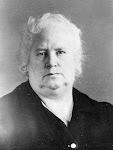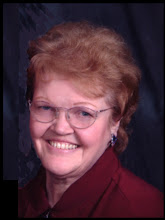Shelley Stake Relief Society Prepares for Hard Times
Taken from a History of the Shelley Stake Relief Society from June 1938 – July 1948
At the suggestion of the General Board and in accord with the advice of the General Welfare Committee in 1940, a survey of bedding conditions was made by the Relief Societies of the Stake and an acute need was found for more and better bedding. To help meet that need and at the same time help families to help themselves, permission was given by the Bishop’s Council to open the building which had been purchased for a welfare center. The Council renovated, financed, and partly equipped the building for a sewing center and under the sponsorship of the Stake Relief Society, was opened for work on October 9, 1940, with Sarah Kirkham, Chairman, and Tressa Hunter, Supervisor. Women came in from all over the Stake to work, with each Ward given certain days to come and each woman given a work credit slip for hours worked. 750 quilts were made by the time the building was evacuated in the fall of 1944 to make room for the welfare store. But by that time, the project had been justified. Of the 750 quilts completed, 83 had gone into homes of the very needy, many had been brought in and quilted without charge for those who could not pay, 24 had been turned to the Regional Store house, 18 were retained for future welfare and first aid work; and all the others had been taken into homes in the Stake at a very nominal cost.
To further help solve the bedding needs in the Stake, a government project for the distribution of surplus cotton to needy and low income families was taken over in November and December of 1941 by the Stake Relief Society, with Sarah Kirkham, chairman; Mabel Roberts and Louise Arave, supervisors; and with the co-operation of County Commissioner, Arnfred Christensen: A. A. A. Chairman, Allan Johnson*, and County Agent, I. W. Slater. The cotton and ticking and twine was furnished through the county and 2.00 per mattress was charged the families receiving the finished mattresses to cover the cost of supervising and incidentals, and the work was done by the families themselves. The work was done in the basement of the 2nd Ward Church. 19 bales of cotton and 2133 yards of ticking were used in the project. 212 mattresses were made and went into 161 homes – this included mattresses made at different times for five families who had been burned out. The project cost to the Relief Societies was only 47.78.As a result of the mattress project, and the quilting done at the Welfare Sewing Center and the accompanying stimulation of interest in better bedding, every home in the Stake so far as known was adequately supplied with good bedding and were much better supplied and prepared for the anticipated shortages ahead. (World War II)
*Allan was the brother-in-law of Doris Johnson, daughter of Sarah Kirkham.
.jpg)
.jpg)


No comments:
Post a Comment
Please comment or add information to be published on this site.